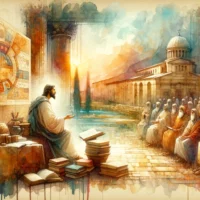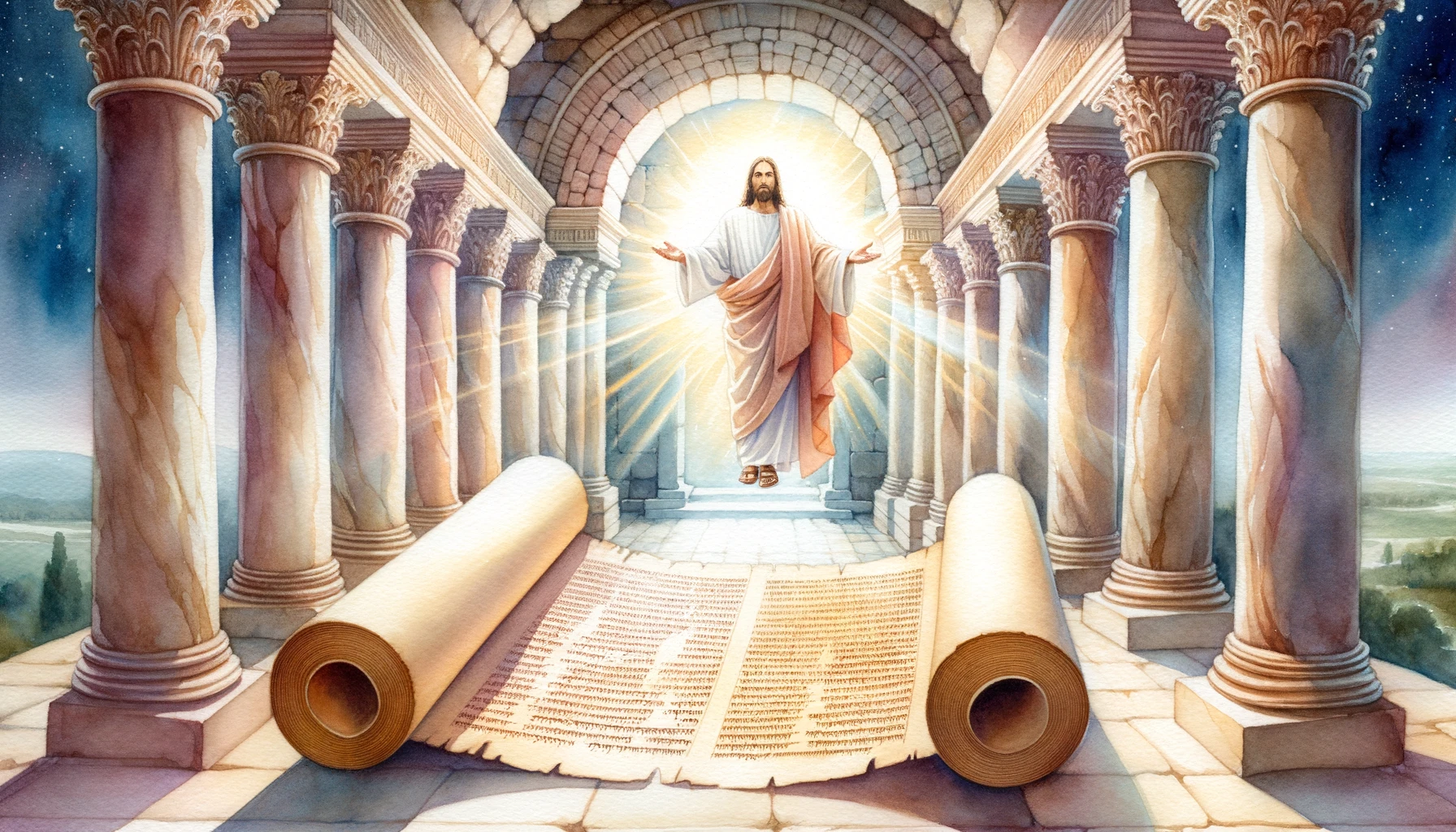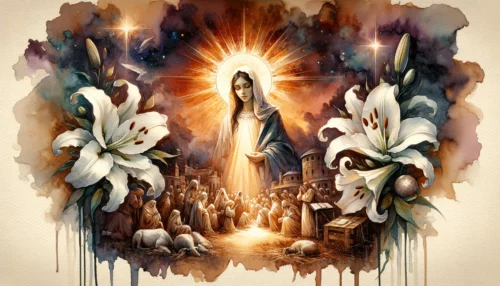We continually find ourselves seeking solace, guidance, and affirmation in the Bible, the divinely inspired word of God. One of the fundamental tenets of our faith lies in understanding Jesus as the Messiah, a belief strongly rooted in prophecy. This exploration forms the basis of our faith, our hope, and ultimately, our salvation. Thus, in this article, we will embark on an investigative journey, comprehending the prophecies foretold about the Messiah and their fulfillment in Jesus Christ. By diving into these divine predictions and promises, we hope to provide a comprehensive understanding of the prophecies that confirm Jesus as the Messiah.
Prophecies of the Messiah in the Old Testament
The Old Testament, replete with prophetic declarations, begins to paint a picture of the Messiah. Genesis holds the first messianic prophecy, where the “seed of the woman” is described as overcoming the serpent (Genesis 3:15). This hints at a future person who would deal a decisive blow to evil.
Prophecies continue to unfold, offering glimpses of the character and mission of the Messiah. In the book of Isaiah, the Messiah is referred to as the “Wonderful Counselor, Mighty God, Everlasting Father, Prince of Peace” (Isaiah 9:6). Moreover, He is depicted as one who would suffer innocently, bearing the sins of many (Isaiah 53).
Moving ahead, the prophetic view becomes more specific. Micah foretells the birthplace of the Messiah as Bethlehem (Micah 5:2). A unique birth is described in Isaiah, mentioning a virgin birth (Isaiah 7:14). The Psalms also hold valuable messianic prophecies. Psalm 22 details a death by crucifixion centuries before crucifixion was even a method of execution. It describes the piercing of hands and feet, along with the casting of lots for clothing.
Daniel predicts the timeline of the coming of the Messiah. He prophesied that 483 years after the decree to rebuild Jerusalem, the Anointed One would be cut off (Daniel 9:25-26). Jeremiah, on the other hand, speaks about the New Covenant that the Messiah will establish (Jeremiah 31:31-34). This covenant will not be based on external laws, but on an inward transformation of the heart.
The Old Testament provides a comprehensive series of prophecies about the Messiah. It starts from the hint of a coming Savior in Genesis, progressing to prophecies about His character, His birth, His mission, His death, and the New Covenant He will establish. These predictions weave a tapestry of anticipation for a unique individual capable of fulfilling these diverse and specific prophecies. Thus, we gain a prophetic image of the Messiah from the Old Testament.
The Fulfillment of Messianic Prophecies in Jesus Christ
The life of Jesus Christ, as chronicled in the New Testament, shows a remarkable alignment with the Old Testament prophecies. His birth in Bethlehem, as recorded in the Gospel of Matthew and Luke, fulfills the prediction made in Micah (Micah 5:2). Moreover, His virgin birth to Mary aligns with Isaiah’s prophecy (Isaiah 7:14).
Jesus’ life, teaching, and miracles echo the prophesied character and mission of the Messiah. His ministry of healing, compassion, and forgiveness mirrors Isaiah’s depiction of the Messiah (Isaiah 61:1-2). His extraordinary wisdom and peaceful demeanor embody the titles given in Isaiah: “Wonderful Counselor, Prince of Peace” (Isaiah 9:6).
In an extraordinary fulfillment of prophecy, Jesus initiates the New Covenant at the Last Supper. He describes the cup as the “new covenant in my blood” (Luke 22:20), directly referencing Jeremiah’s prophecy (Jeremiah 31:31-34).
The death of Jesus provides the most striking fulfillment of prophecy. The crucifixion scene in the Gospel of Matthew aligns with Psalm 22, from the casting of lots for His garments to the piercing of His hands and feet. His unjust trials, His silence before His accusers, and His sacrificial death align with the prophecy in Isaiah 53.
Even the timing of Jesus’ ministry aligns with the prophecy in Daniel. Historical records show that the decree to rebuild Jerusalem was issued by Artaxerxes I in 458 B.C. If we count 483 years from this point, we land in the midst of the first century A.D., when Jesus’ ministry took place (Daniel 9:25-26).
Jesus’ life, from birth to death, fulfills a multitude of Old Testament prophecies. His birth in Bethlehem, His virgin birth, His character, His teachings, His initiation of the New Covenant, and His sacrificial death are all in line with what was foretold. Furthermore, the timeline of His life fits perfectly with Daniel’s prophecy. This detailed correlation strengthens our faith in Jesus as the promised Messiah.
The Significance of Prophecy in Confirming Jesus as Messiah
Prophecy holds a vital role in validating Jesus as the Messiah. It serves as a divine seal, an affirmation of authenticity granted by God. Prophecy’s significance emanates from its origin – God himself (2 Peter 1:21). Therefore, its fulfillment attests to the truthfulness of God’s word and provides assurance of His plans and promises.
The fulfillment of prophecy in Jesus helps identify Him as the Messiah. No other figure in history aligns with the multitude and specificity of the prophecies as Jesus does. This divine identification process, embedded in prophecy, lends credibility to Jesus’ claims and His role as the Messiah (John 5:39).
Prophecy enhances our understanding of God’s salvation plan. It gives us a clear picture of how meticulously God has orchestrated the events leading to our redemption through Jesus. The prophecies and their fulfillment in Jesus affirm the intricate design and faithfulness of God in bringing about our salvation (1 Peter 1:10-12).
Prophecy fortifies our faith. As we observe the fulfillment of prophecy in Jesus, our faith is bolstered, knowing that our beliefs are grounded in God’s accurate and truthful word (Romans 10:17). This fulfillment encourages us to trust in Jesus as our Messiah and rely on God’s promises for our lives and our eternal future.
Prophecy serves multiple critical functions in confirming Jesus as the Messiah. It acts as a divine seal of authenticity, helps identify Jesus as the Messiah, illuminates God’s salvation plan, and strengthens our faith. These aspects underscore the importance of prophecy in affirming our belief in Jesus as the promised Messiah. This profound understanding fortifies the roots of our Christian faith and provides confidence in God’s truthful word and promises.
The Prophetic Confirmation of the Messiah
The fulfillment of these prophecies in Jesus Christ not only confirms His identity as the Messiah but also emphasizes the reliability and precision of God’s word. This realization underscores the importance of our Christian faith, a faith firmly grounded in the divine promise and its extraordinary fulfillment.
As you continue to meditate on this topic, consider these questions:
- How does the fulfillment of prophecy in Jesus strengthen your personal faith?
- In what ways does understanding the connection between Old Testament prophecies and Jesus impact your perspective of God’s salvation plan?
- How can you use the knowledge of these prophecies to deepen your connection with Jesus and cultivate a stronger Christian life?
Our faith is built on the foundation of God’s truthful word and His unchanging promises. The prophecies of the Messiah and their fulfillment in Jesus affirm this truth. As we grow in our understanding of these prophecies, may our faith deepen, our hope become more steadfast, and our commitment to Jesus as our Messiah become unshakeable. May the journey of prophecy enrich our faith, inspire our hearts, and lead us closer to our Savior.














